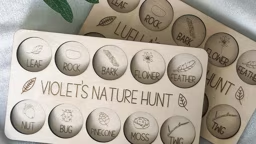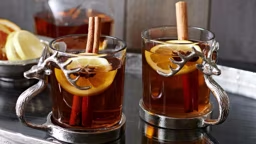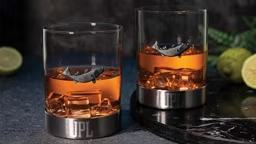Cabin folks generally don’t need an excuse to head into the woods at this time of year. But if you want to try something different, how about searching for edible wild mushrooms? Once you start looking, you’ll see mushrooms everywhere, in all shapes, sizes and colors. The vast majority should be considered inedible. Happily, there are four delicious wild mushrooms that are fairly widespread and easy to identify: morels, chicken mushrooms, giant puffballs and chanterelles. These are sometimes referred to as “The Foolproof Four.”
Before you begin, keep these safety tips in mind:
Safety & Wild Mushrooms
- All wild mushrooms must be thoroughly cooked before eating. Never sample a raw wild mushroom!
- If possible, enlist the help of an experienced forager when learning about wild mushrooms. Join a local affiliate of the North American Mycological Association (namyco.org/clubs.php), where you’ll learn from experts.
- Consult a reliable guidebook with photos, and ensure that all identification points listed match your specimens.
- When trying a new wild mushroom for the first time, eat just a small portion; some people react badly to mushrooms that others can eat with no problem.
- Some wild mushrooms don’t mix well with alcohol, and reactions differ from person to person.
- When in doubt, throw it out. Never, ever eat a wild mushroom unless you are 100% sure of its identity.
Morels (Morchella species)
One of the most sought wild mushrooms, morels are super easy to identify and highly prized in the kitchen. Unfortunately they have a short season in most regions – often, just a few weeks in the spring. However, they sometimes appear into early summer in northern states, and grow through August in higher elevations of the Pacific Northwest.
Although found throughout America, they are most common in the eastern half of the U.S. and in West Coast states. Begin looking for morels when apple trees and lilacs form flower buds. Morels are generally found near trees. Many foragers search near dying or recently dead elms; others concentrate on old apple orchards. Other morel magnets include ash, cottonwood, sycamore and tulip poplar. In northern and western states, morels may appear under conifers. Morels require adequate moisture and may not appear in dry years.
The morel cap is conical and honeycombed with ridges that surround pits; it should feel fresh and moist, never slimy. Morels are typically 1 to 3 inches tall. They may be whitish, golden, gray or blackish, all with whitish stems. When cut in half vertically, morels are completely hollow; there may be a slight jog where the cap meets the stem, but the cap and stem flow together smoothly.
Morels are excellent pan-fried in butter or battered and deep-fried. Several inedible mushrooms may confuse the novice hunter. False morels (Gyromitra species) have caps that are wrinkled, folded or brain-like rather than ridged; the insides contain pocketed flesh. Caps of verpas (Verpa species) are wrinkled or smooth; caps are attached to the stems only at the top, hanging in skirt-like fashion, and stems contain cottony material inside. Stinkhorns (Phallus species) have slimy caps that may be pocketed or smooth; they grow from summer through fall, so if you find what you think might be a morel in the Midwest in July, it’s likely a stinkhorn.
Chicken mushrooms (Laetiporus species)
Also called Chicken of the Woods or Sulphur Shelf, these colorful mushrooms are easy to spot. Look for overlapping clusters of thick, stemless, fan-shaped caps growing on trees, stumps or downed wood. The tops are orangish to yellowish-orange, with irregular edges that are often paler. Undersides are blanketed with fine lemon-yellow pores. Caps may be smooth or wrinkled; they often feel suede-like but are never fuzzy or hairy. Individual caps are typically 4 to 8 inches wide.
Chicken mushrooms appear from spring through fall on hardwoods and conifers across the U.S. A variety found only along the West Coast grows on eucalyptus trees; it has been known to cause digestive problems. Harvest only fresh specimens that feel somewhat moist and fleshy.
The tender edges are prime eating, with a meaty texture and chicken-like taste; they can be sautéed, pan-fried or stir-fried. The base is likely to be tough; many foragers harvest only the edges. Don’t pick older, faded specimens, which will be tough and sour and may cause digestive problems or allergic reactions.
Giant puffballs (Calvatia gigantea & others)
If you spot what looks like a volleyball off in the woods, check it out; you might have found a giant puffball. These large, globe-like mushrooms are typically 8 to 12 inches across but can be even larger. The classic giant puffball, found east of the Rockies, has smooth, whitish skin. In the Rockies and further west, you may encounter a giant puffball (C. booniana) whose whitish skin is broken up into polygonal patches. Giant puffballs rest directly on the ground and have no stem, although a short root may be present. They grow from early summer through fall.
Many smaller puffball species are edible, but some small spherical mushrooms are not, so beginners should collect only puffballs that are at least 6 inches across. To confirm edibility, cut giant puffballs in half from top to bottom. The inside must be pure, featureless white; if it is darker or has any shadowy shapes, discard it.
Diced puffballs work well in recipes that call for white button mushrooms; thick slices can be brushed with seasoned oil and grilled. As puffballs mature, the skin wrinkles and insides become darkened and powdery. Kids often make a game of stomping on these mature puffballs to release a cloud of powdery spores, but this isn’t advised because inhaling the spores can cause respiratory problems.
Yellow chanterelles (Cantharellus cibarius)

These choice edibles grow from the soil under hardwoods (particularly oak) and conifers, singly or in loose groups. The smooth caps are yellowish to pale apricot, ranging from 1 to 5 inches across. Edges are rolled under on young specimens, turning upwards and becoming wavy. The cap undersides have blunt-edged, shallow gill-like folds that continue partway down the stem; the folds can be peeled away from the cap in small sheets. Stems are smooth below the folds and often paler than the caps. The flesh is whitish throughout. Chanterelles have a fruity aroma and grow from summer into early fall.
Pan-fry them in small batches with a little butter, cooking until the juices they release have cooked away; then, season simply, or add liquids to make a sauce. Take care not to gather the toxic Jack o’Lantern (Omphalotus illudens). This yellowish-orange to deep orange mushroom grows in tight clusters from tree roots that may be buried. It has closely spaced knife-edged gills that will break when pressed. The flesh is orange throughout.














